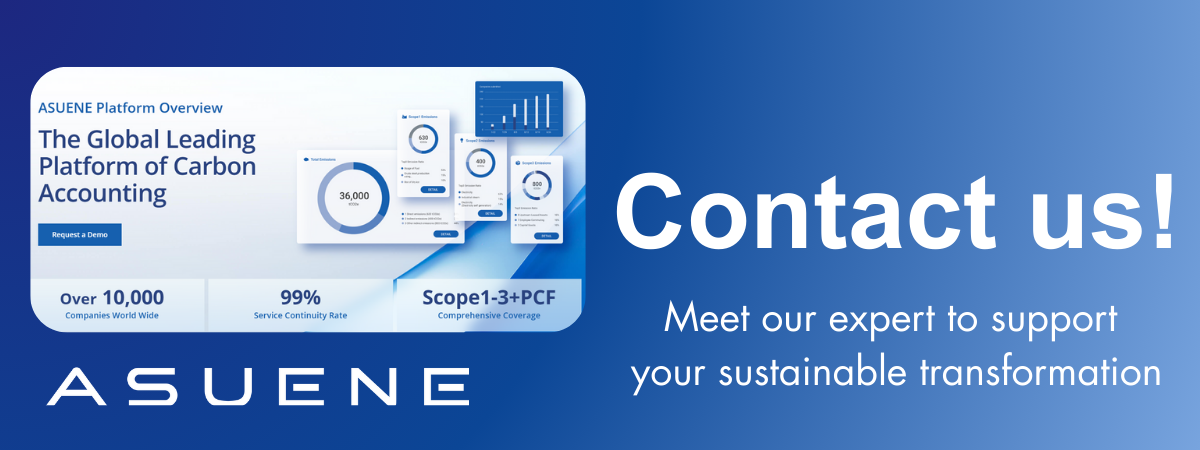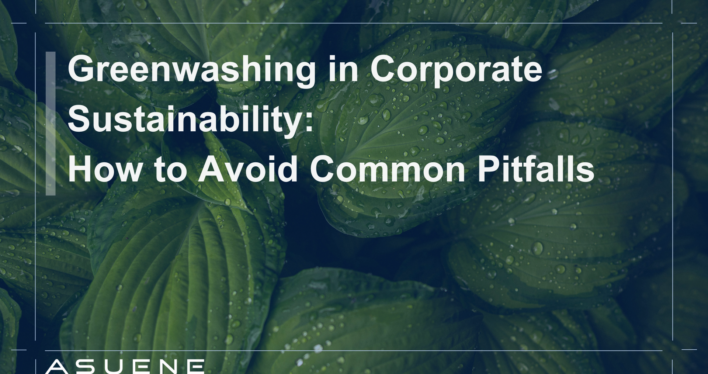- Article Summary
-
Introduction: Understanding Greenwashing in a Sustainability-Driven Era
In recent years, corporate sustainability has evolved from a niche concern to a mainstream expectation. Investors, consumers, and regulators are increasingly demanding transparency and accountability in how companies address their environmental, social, and governance (ESG) responsibilities. As a result, organizations are under pressure to showcase their green credentials. However, not all sustainability claims are created equal.
Greenwashing, the practice of misleading stakeholders about a company’s environmental practices or benefits, has become a critical issue. While some companies engage in greenwashing intentionally, others may do so unknowingly, due to poor ESG communication or lack of understanding. Regardless of the intent, the consequences are significant: reputational damage, regulatory penalties, and erosion of stakeholder trust.
This article explores the most common pitfalls of greenwashing and offers a practical roadmap for companies to develop authentic, verifiable, and impactful sustainability strategies.
Common Types of Greenwashing and Their Risks
Greenwashing can take many forms, from exaggerated claims to vague terminology. Identifying these patterns is essential for businesses looking to steer clear of misleading practices.
| Type of Greenwashing | Description | Example |
|---|---|---|
| Vague or undefined language | Using terms like “eco-friendly” or “green” without specific metrics | Labeling packaging as “natural” without explanation |
| Irrelevant claims | Highlighting one sustainable feature while ignoring more significant impacts | Promoting recyclable packaging for a high-emissions product |
| Hidden trade-offs | Focusing on one green aspect to distract from overall unsustainable operations | Advertising reduced plastic while ignoring carbon footprint |
| No proof or third-party audit | Lacking credible data or certification to support sustainability claims | Claiming carbon neutrality without verified data |
| Lesser of two evils | Positioning a harmful product as greener than alternatives | Marketing diesel cars as cleaner than older models |
Greenwashing undermines genuine ESG efforts and can backfire severely. In 2021, the UK’s Competition and Markets Authority found that 40% of green claims made online could be misleading, prompting regulatory crackdowns*. Similarly, the U.S. SEC has increased scrutiny on ESG disclosures, aiming to protect investors from deceptive sustainability claims.
Regulatory Landscape and Enforcement Trends
As sustainability becomes a regulatory priority, global frameworks are emerging to combat greenwashing. Businesses must understand the legal risks of misleading ESG claims and adapt to evolving disclosure requirements.
| Region | Regulatory Body | Key ESG-Related Regulations |
|---|---|---|
| United States | Securities and Exchange Commission (SEC) | Proposed ESG Disclosure Rules; Green Fund Scrutiny |
| European Union | European Commission, ESMA | Corporate Sustainability Reporting Directive (CSRD) |
| Japan | Financial Services Agency | Climate-related Financial Disclosures aligned with TCFD |
| Australia | ASIC | Enforcement of misleading ESG claims in fund management |
The EU’s CSRD, which goes into effect in 2024, requires companies to disclose standardized, independently verified ESG metrics. In the U.S., the SEC’s ESG Task Force, established in 2021, is targeting greenwashing in investment marketing and corporate filings. These developments reflect a global shift from voluntary to mandatory sustainability disclosure with legal consequences for non-compliance.
Case in Point: In 2022, Deutsche Bank’s asset management arm DWS faced investigations from U.S. and German regulators over allegedly exaggerated ESG credentials. The result was a reputational hit, regulatory fines, and loss of investor confidence.

Building Trust: Best Practices for Transparent Sustainability
Avoiding greenwashing requires more than compliance, it demands authenticity, consistency, and stakeholder engagement. Companies can adopt several best practices to ensure their sustainability claims are credible and meaningful.
1. Adopt Globally Recognized Standards
Align reporting with frameworks like:
- GRI (Global Reporting Initiative)
- SASB (Sustainability Accounting Standards Board)
- TCFD (Task Force on Climate-Related Financial Disclosures)
- CDP (Carbon Disclosure Project)
These standards provide structure, comparability, and credibility.
2. Use Verified Data and Third-Party Certifications
Independent audits and certifications (e.g., ISO 14001 for environmental management or Science-Based Targets initiative for emissions) enhance trust.
| Certification | Purpose |
|---|---|
| ISO 14001 | Environmental management systems |
| Science-Based Targets (SBTi) | Emissions reduction aligned with climate science |
| B Corp Certification | Holistic ESG performance across operations |
3. Communicate Transparently and Honestly
Avoid absolute language (“100% sustainable”), and instead explain limitations and trade-offs. Highlight challenges and progress, not just achievements.
4. Embed ESG into Core Business Strategy
Sustainability should not be a marketing add-on. Integrate ESG goals into product design, supply chain decisions, employee incentives, and investment planning.
5. Engage Stakeholders Actively
Solicit feedback from investors, customers, and communities. Transparent dialogue builds trust and accountability.
How to Evaluate ESG Integrity from the Outside
In an era where sustainability claims abound, investors, consumers, and supply chain partners need tools to distinguish genuine ESG performance from superficial greenwashing. Evaluating a company’s ESG integrity from the outside involves a critical look at the quality, consistency, and transparency of its disclosures.
Here are five effective approaches that external stakeholders can use:
| Evaluation Method | What to Look For |
|---|---|
| Review of Third-Party Ratings | ESG ratings from independent bodies such as MSCI, Sustainalytics, or CDP |
| Consistency Across Reports | Alignment between ESG reports, investor briefings, and marketing materials |
| Materiality Assessment Disclosure | Whether the company identifies and reports on issues that are truly material to its sector |
| Science-Based Target Validation | Confirmation that climate targets are validated by organizations like SBTi |
| Transparency on Negative Impacts | Willingness to disclose risks, missed targets, and mitigation plans |
Red Flags to Watch For:
- Reports that overemphasize branding but lack concrete data
- Selective reporting that avoids Scope 3 emissions or controversial issues
- Inconsistencies between ESG claims and operational behavior (e.g., lobbying records)
Through structured and critical analysis, stakeholders can support businesses that prioritize substance over spin and encourage others to raise their standards.
Indicators of Authentic ESG Leadership
Instead of relying on high-profile examples, it is more useful to recognize the traits that define organizations committed to meaningful sustainability. Authentic ESG leadership is not about bold marketing campaigns, it is about long-term consistency, credible reporting, and internal alignment across business functions.
The following indicators help identify companies that are genuinely progressing toward sustainability goals:
| Indicator | What It Looks Like in Practice |
|---|---|
| ESG Goals Tied to Executive Incentives | Linking CEO and leadership bonuses to emissions reduction or diversity metrics |
| Lifecycle Sustainability Approach | Assessing and reducing environmental impact across product design to disposal |
| Full-Scope Emissions Reporting | Disclosure of Scope 1, 2, and 3 emissions with methodology transparency |
| Investment in Green Innovation | Budget allocations toward low-carbon technology, energy efficiency, and circular economy models |
| Open Disclosure of Challenges | Acknowledging areas where ESG targets were missed, along with corrective actions |
These indicators demonstrate that authentic sustainability is built into strategy and operations, not merely reflected in external branding. Transparent organizations understand that ESG is a journey. They provide verifiable progress updates, welcome scrutiny, and continually refine their approach based on evolving stakeholder expectations.
Organizations that embed these behaviors are more likely to build enduring trust, even when their sustainability journey is still in progress.
Conclusion: Toward a Credible and Accountable ESG Future
As the ESG landscape matures, greenwashing is no longer a viable option, legally, reputationally, or ethically. Companies must move beyond superficial claims and embed sustainability into the heart of their operations. Avoiding greenwashing requires diligence: setting measurable goals, using standardized frameworks, and engaging transparently with stakeholders.
The future belongs to companies that understand sustainability is not just a brand value, it’s a strategic imperative. Authentic ESG leadership will differentiate market leaders from laggards, shape investor decisions, and drive lasting impact.
In a world increasingly defined by climate risk, social accountability, and regulatory pressure, businesses must ask themselves: are we truly walking the talk or merely painting it green?
Why Work with ASUENE Inc.?
Asuene is a key player in carbon accounting, offering a comprehensive platform that measures, reduces, and reports emissions. Asuene serves over 10,000 clients worldwide, providing an all-in-one solution that integrates GHG accounting, ESG supply chain management, a Carbon Credit exchange platform, and third-party verification.
ASUENE supports companies in achieving net-zero goals through advanced technology, consulting services, and an extensive network.


